Lines and Angles Class 7 Worksheet Maths Chapter 6
Ques 1: (a) Complementary angle of 65° is .......................
(b) Supplementary angle of 45° is .........................
(c) If line AB||CD and LM is transversal, the sum of two interior angles on the same side of transversal is equal to ......................
(d) An angle is formed by the intersection of ...........................
 View Answer
View Answer 
Ans: (a) 25°
(b) 135°
(c) 180°
(d) Two lines or two surfaces
Ques 2: In the figure, identify the pairs of corresponding angles.
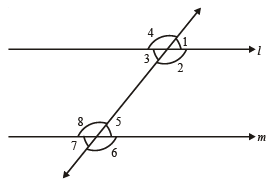
 View Answer
View Answer 
Ans: ∠1 & ∠ 5, ∠2 & ∠6, ∠4 & ∠8, ∠3 & ∠7
Ques 3: An angle is greater than 45°. Its complement will be:
(a) Less than 45°
(b) Equal to 45°
(c) Greater than 45°
(d) None of these
 View Answer
View Answer 
Ans: (a)
Ques 4: State true or false:
(a) If the measure of an angle is 90° then its supplement angle will be greater than 90°.
(b) Two obtuse angles form a linear pair.
(c) Two acute angles form a linear pair.
(d) If two adjacent angles are complementary they form a right angle.
 View Answer
View Answer 
Ans: (a) False
(b) False
(c) False
(d) True
Ques 5: In the figure, the arms of two angles are parallel.
If ∠PQR = 70°, then find
(i) ∠LGR
(ii) ∠LMN
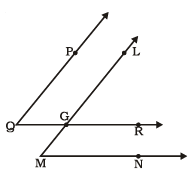
 View Answer
View Answer 
Ans: (i) ∠LGR = 70°
(ii) ∠LMN = 70°
Ques 6: Indicate two pairs of angles which are:
(i) Vertically opposite angles
(ii) Linear pairs
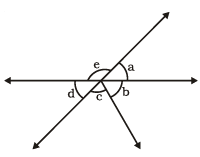
 View Answer
View Answer 
Ans. (i) ∠a & ∠d, ∠e & ∠(c+b)
(ii) ∠a & ∠e, ∠e & ∠d
Ques 7: In the following figure, is ∠x is adjacent to ∠y?
Give reason.
 View Answer
View Answer 
Ans: No. because vertex is not common
Ques 8: Find the angle:
(i) Which is equal to its complement.
(ii) Which is equal to its supplement.
 View Answer
View Answer 
Ans. (i) 45°
(ii) 90°
Ques 9: In the given figure, decide a is parallel to b:
(i)
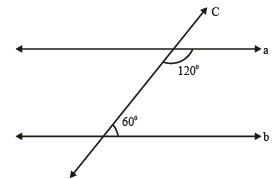
(ii)
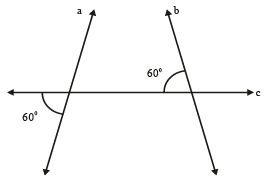
(iii)
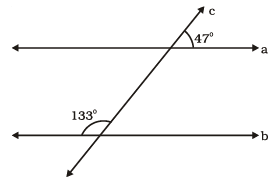
 View Answer
View Answer 
Ans. (i) Yes
(ii) No
(iii) Yes
Ques 10: State the property that is used in each of the following statements:
(i) If l || m, then ∠4 = ∠8
(ii) If ∠1 = ∠7, then l || m
(iii) If ∠3 + ∠8 = 180°, then l||m
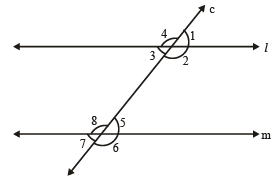
 View Answer
View Answer 
Ans. (i) Corresponding angles
(ii) Corresponding & vertically opposite angles
(iii) Co-interior angles theorem
Ques 11: Find the value of y in each of the following figures if a || b:
(i)
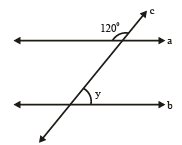
(ii)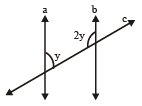
(iii)
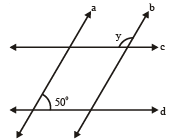
 View Answer
View Answer 
Ans: (i) y = 60°
(ii) y = 60°
(iii) y = 130°
Ques 12: In the following figure name the following pairs of angles:
(i) Obtuse vertically opposite angles.
(ii) Adjacent complement angles.
(iii) Equal supplementary angles.
(iv) Unequal supplementary angles.
(v) Adjacent angles that do not form a linear pair.
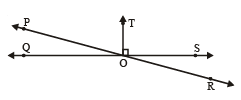
 View Answer
View Answer 
Ans. (i) ∠POS & ∠QOR
(ii) ∠QOP & ∠POT
(iii) ∠QOT & ∠TOS
(iv) ∠POQ & ∠QOR, ∠POQ & ∠POS, ∠ROT & ∠POT, ∠ROS & ∠POS
(v) ∠TOS & ∠SOR, ∠POQ & ∠POT, ∠POT & ∠TOS
|
76 videos|452 docs|39 tests
|
FAQs on Lines and Angles Class 7 Worksheet Maths Chapter 6
| 1. What are lines and angles in geometry? |  |
| 2. How do you calculate the measure of an unknown angle when given a pair of angles? |  |
| 3. What are complementary and supplementary angles? |  |
| 4. What is the relationship between parallel lines and angles? |  |
| 5. How can I apply the properties of angles in real-life situations? |  |

















